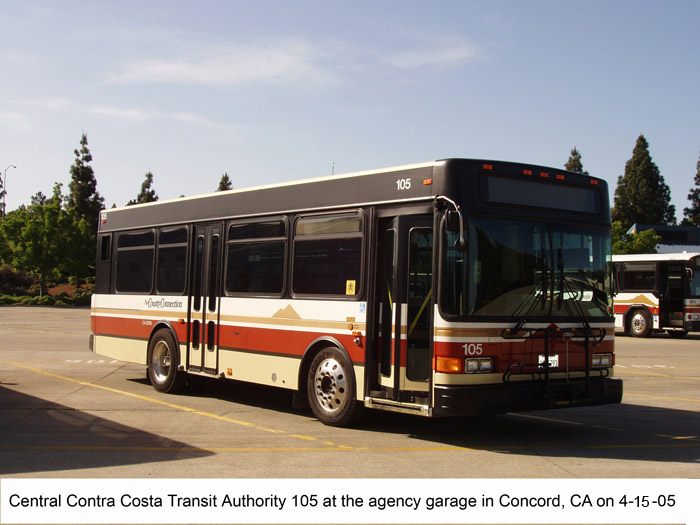
Convention Report
Spring 2005
San
Francisco Bay Area, California
April
15-18, 2005
The
Spring 2005 convention of the Motor Bus Society was held in the San Francisco
Bay Area of California over the weekend of Friday, April 15 to Monday, April 18,
and was attended by about 85 members and guests. Headquarters hotel was the Holiday Inn-Civic Center, at
Eighth and Market in uptown San Francisco.
Conventions staff was led by Director of Conventions Operations Dino
Mandros, along with Bay Area MBS member John McKane. Dino made a special trip to the Bay Area in January to make
preliminary arrangements for the visits. He
was accompanied by John, who also spent many hours reviewing the tour routes
and timing. The fact that the
convention was executed so well is a tribute to the fine efforts of these two
men. Bay Area member Ron
Medaglia initiated two important contacts for the meeting. Buses were provided by Coach USA/Franciscan Lines-Gray Line
of San Francisco. Drivers on
Friday, Saturday and Sunday were MBS member Alan Fong and Charles Powell.
Friday Garage Tour: Friday was devoted to transit operators in the East Bay area. The number of places that could visited and the time schedule was constrained by the scheduled visit to the Gillig plant at 2:00PM. In fact, one of the East Bay properties had to be postponed until Saturday because it could not be fit in on Friday.
The first stop was at the Central Contra Costa Transit Authority (operating as The County Connection), which serves the Diablo Valley from its garage in Concord. The agency runs 131 Gillig transit buses, of which 40 are high floor and 91 are low floor. There are 74 40-foot buses (including all 40 of the high floor units), 32 35-foot and 25 29-foot units.

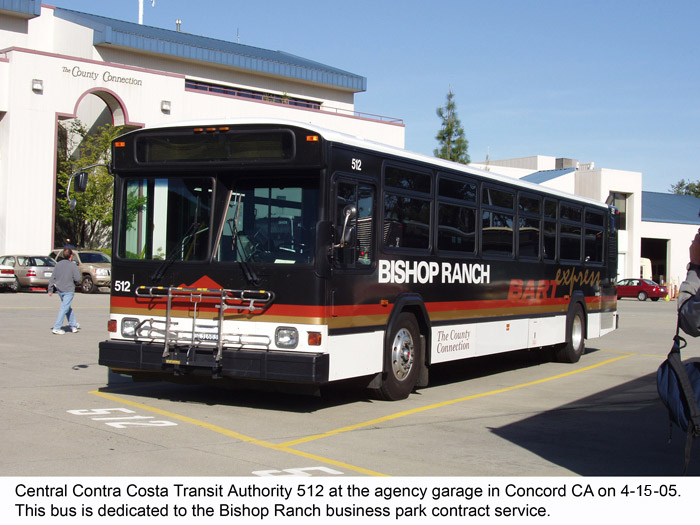
The tour then moved on to the Eastern Contra Costa County Transit Authority (Tri-Delta Transit), which serves the area on the south side of Suisin Bay and the delta area at the convergence of the Sacramento and San Joaquin Rivers from its garage in Antioch. The agency owns 76 buses, including 47 Gillig transits, 10 MCI commuter coaches and 9 Advance Bus Industries trolley replicas. Of the Gilligs, 45 are 40-foot high floor Phantoms and 2 are 29-foot low floor models. The ten MCI’s include six 102-EL3's and four D-4500's. The ten ABI trolleys are 30 feet long. The Central and Eastern Contra Costa operators serve the area once covered by a Greyhound suburban and commute operation out of San Francisco; both agencies now feed Bay Area Rapid Transit District (BART) stations for regional trips throughout the Bay Area.
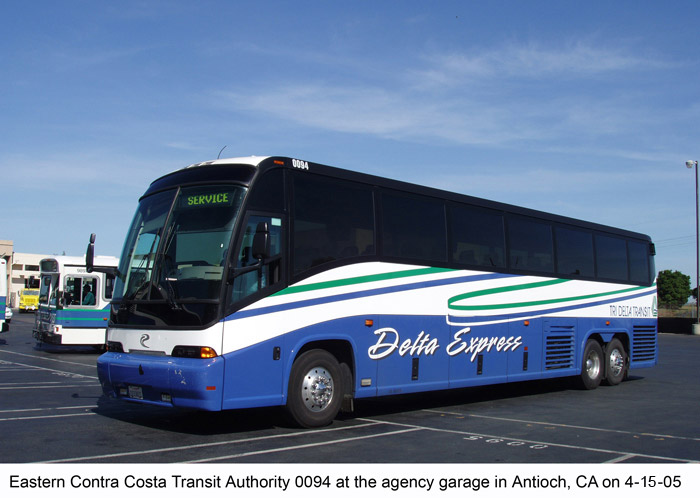
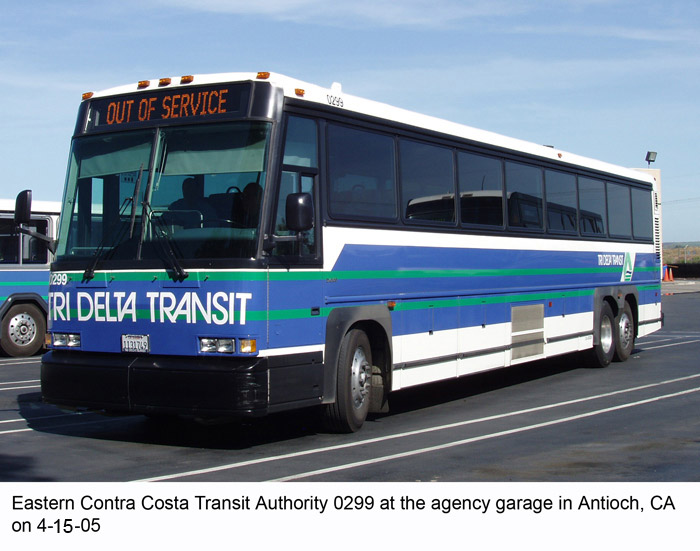
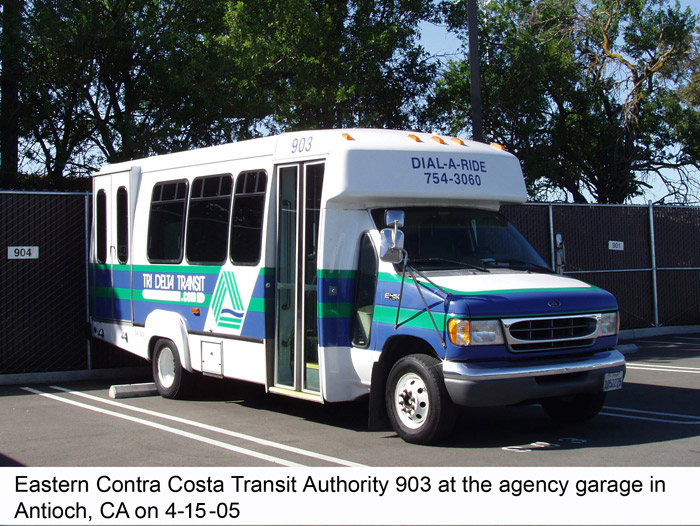
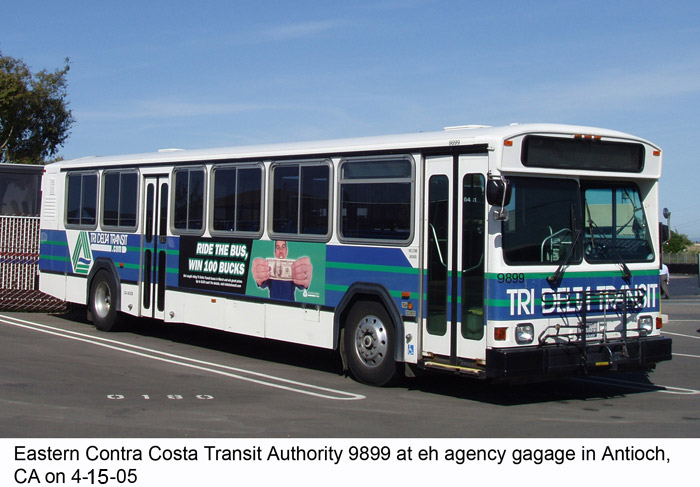
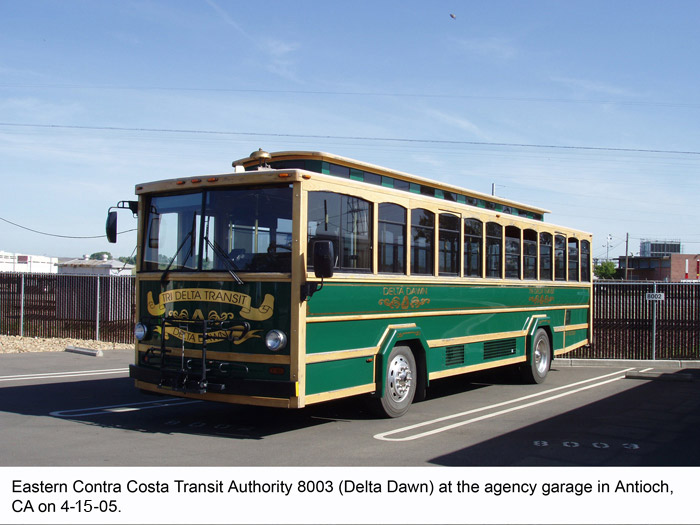
Leaving Tri-Delta, it was south and across the county line and into Alameda County and the Livermore-Amador Valley, now served by the Livermore-Amador Valley Transit Authority (known as “Wheels”). The agency operates 76 buses, including 63 Gilligs,12 New Flyers and one GMC. The lone GMC is a 40-foot RTS, and the Flyers are 40-foot low floor buses. Of the Gilligs, 21 are high floor Phantoms (13 40-footers and 8 35-footers) and 42 low floor models (32 40-footers and ten 29-footers). LAVTA provides local service in the Livermore-Pleasanton-Dublin area, and feeds the BART Pleasanton station; this is the remnant of the BART-subsidized feeder service to the Bayfare Station on the BART East Bay Fremont line.
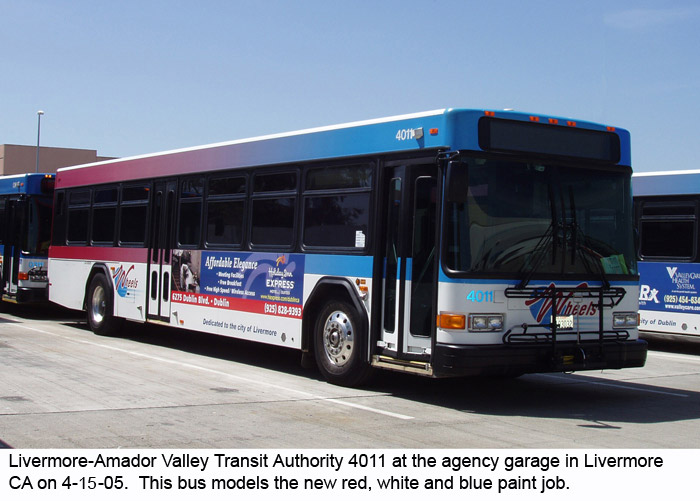
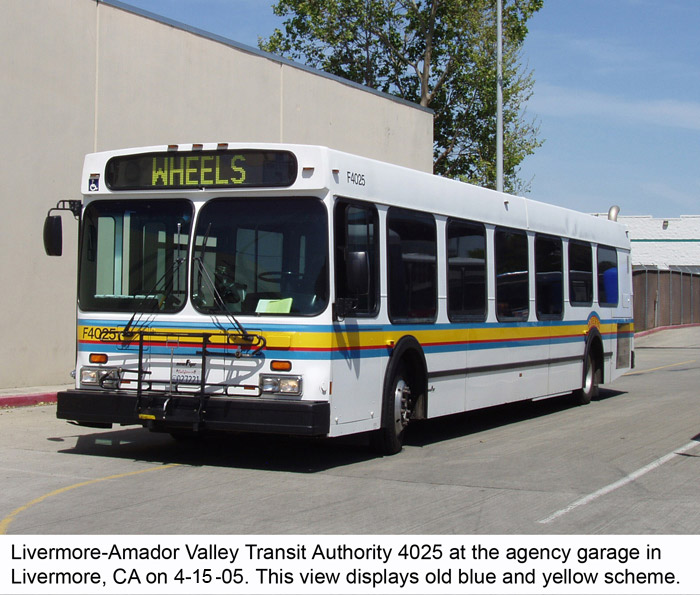
After lunch at the Southland Mall in Hayward, the group arrived at the nearby Gillig plant (about ten minutes early). The visit to the Gillig bus production facility in southwest Hayward was hosted by Senior Vice President Brian Macleod. The group was split into four sections of about 20 each for a more personalized tour. The individual groups were led by a knowledgeable leader, each of which were experts on the manufacturing process, and handled his own tour and fielded questions as the tour progressed. The tour commenced 30 minutes after the completion of the manufacturing work day so that the tour groups would not interfere with the manufacturing process, and so that the tour experience would be quieter, and questions and answers could more easily be heard. The various groups saw how complete buses were constructed, and observed a number of buses in production, including diesel-electric hybrid units for Yosemite National Park, “BRT” units for Kansas City and standard low floor models for Pittsburgh. Photography within the plant was not allowed, but at the conclusion of the tour, two completed buses were posed for photographs outside the plant. Most attendees felt that this tour was the highlight of the entire convention. The Gillig tour consumed two hours.
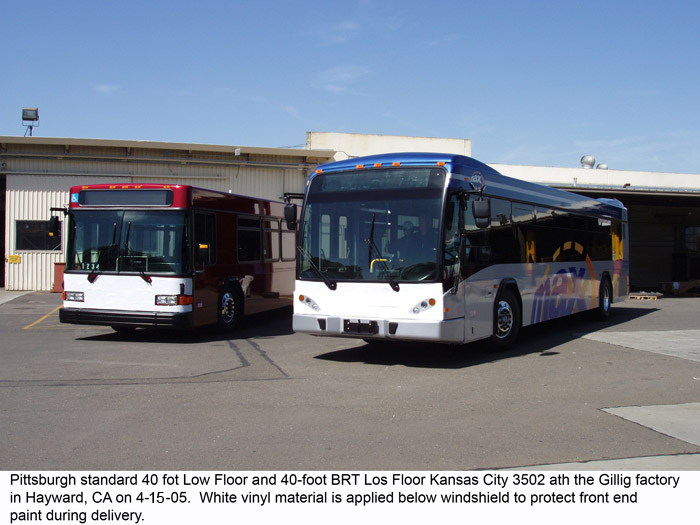
After Gillig, the group proceeded to the Hayward facility (Division 6) of the Alameda-Contra Costa Transit District (AC Transit), about a mile or two away. This visit occurred during the afternoon peak period, and many of the facility’s buses were on the street, but the absence of most of the buses provided better access to the remaining units. AC Transit is the successor to the Key System which had run streetcars and early buses in the East Bay. After the opening of BART Fremont line in the early 1970's, the so-called Try Cities area (Union City, Newark and Fremont) south of Hayward began to develop both residentially and commercially. The expanded original Key System territory, incorporated by AC Transit as Service District No. 1, was jointed by Service District No. 2 covering Newark and Fremont; Union City did not choose to join AC Transit SD 2, and provides its local transit itself. Division 6 was added to serve SD 2 operations as well as the south end of SD 1. AC Transit now operates 666 buses out of four garages. Included are 114 Gillig (54 30-footers and 60 40-footers), 267 NABI (all 40-footers, 204 high floor and 63 low floor), 30 New Flyer artic and 176 VanHool (121 40-footers and 55 artic) transit buses and 79 MCI highway buses (40 102-DL3's and 39 D-4500's) for commuter service.
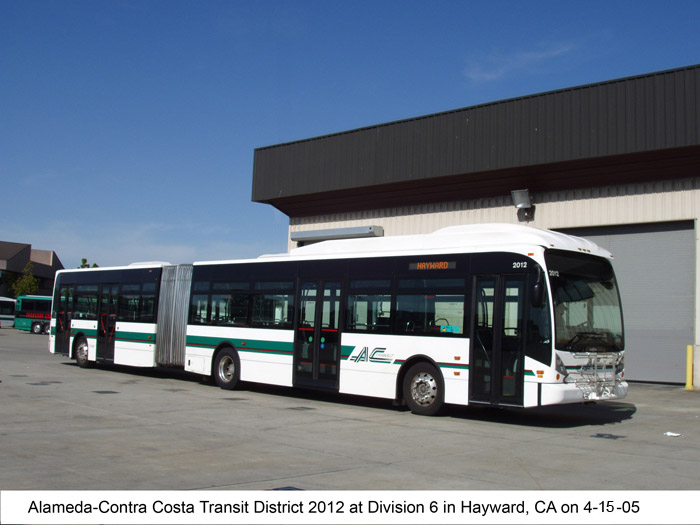
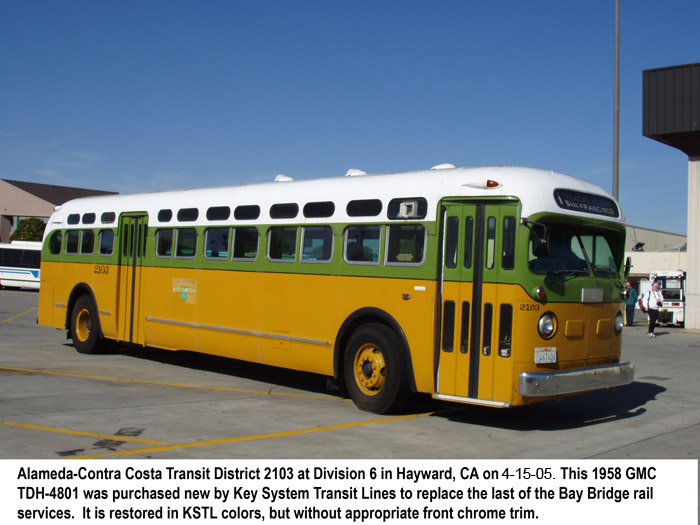
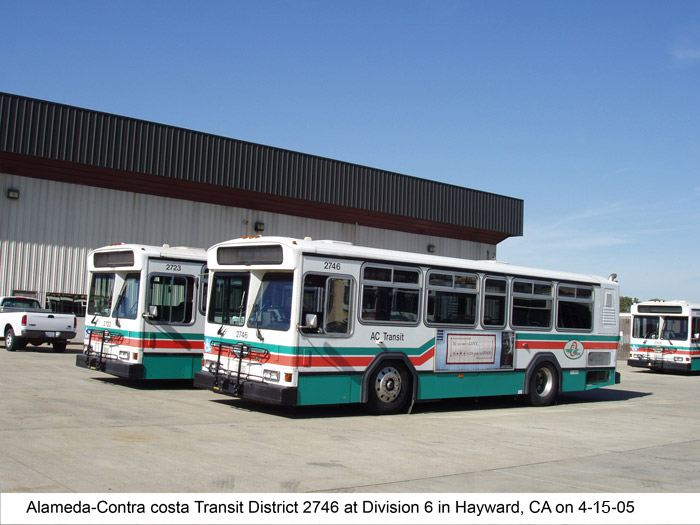
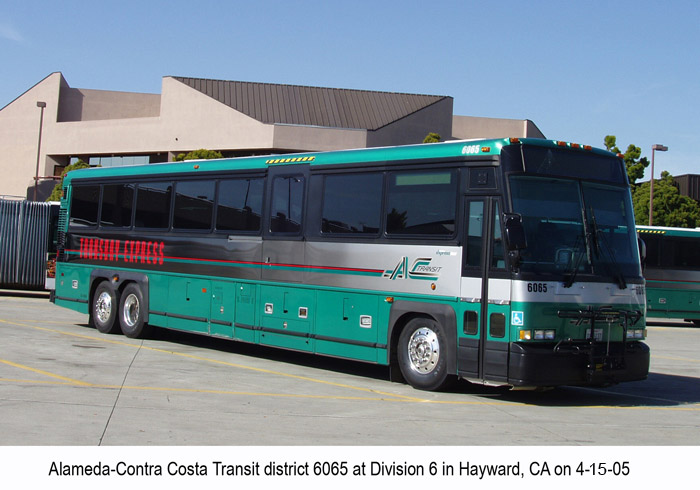
The final stop of the day was at the Union City Transit Center to view Union City Transit’s bus operation. UCT now operates19 buses, including 11 Gillig Phantoms (9 30-footers and 2 35-footers) and four 35-foot high floor Orion V transit buses and four Ford-El Dorado Aerotech cutaways for paratransit.
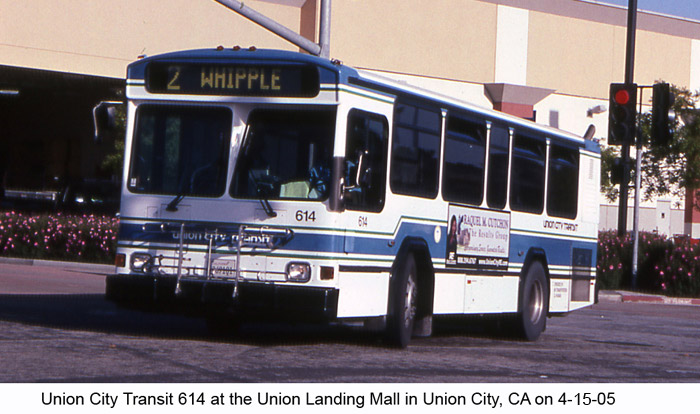
Saturday Garage Tour: The Saturday tour was devoted to the North Bay counties of Marin, Sonoma, Napa and Solano. The first stop was at the Golden Gate Bridge, Highway & Transportation District (Golden Gate Transit) in San Rafael. GGT provides commuter service into San Francisco from Marin and Sonoma Counties, and local service in Marin County. The agency came into existence when it acquired the Marin division commuter and suburban service of Greyhound in 1973. GGT began with a fleet of 132 40-foot GMC New Look buses (which eventually reached 242 new units) and began replacing them with TMC and Nova RTS buses in 1982; the RTS’s were supplemented and partially replaced by Flxible Metros (1995) and Orion V’s (2004). In 1987 a group of 40-foot MCI parlor buses was acquired for long distance commute service; these were replaced by 45-foot MCI’s starting in 1996. Currently in the fleet are 112 TMC and Nova RTS buses, (4 30-foot, 78 40-foot 06's and 30 40-foot WFD’s), 41 40-foot Flxible Metros, 80 40-foot Orion V’s and 52 MCI parlors (46 102-DL3's and 6 D-4500's).
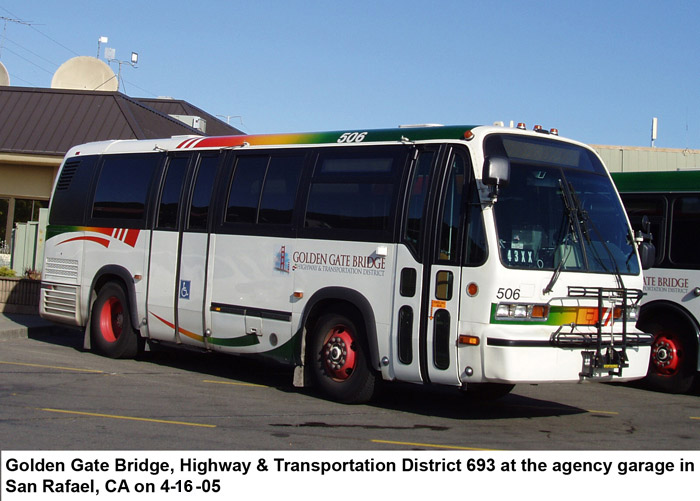
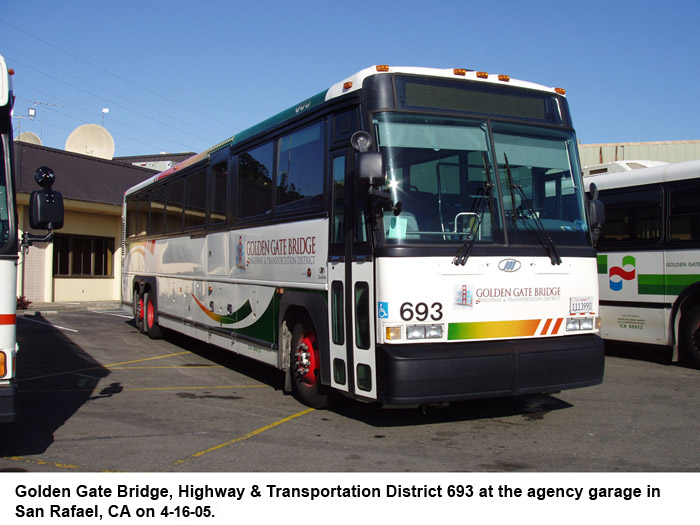
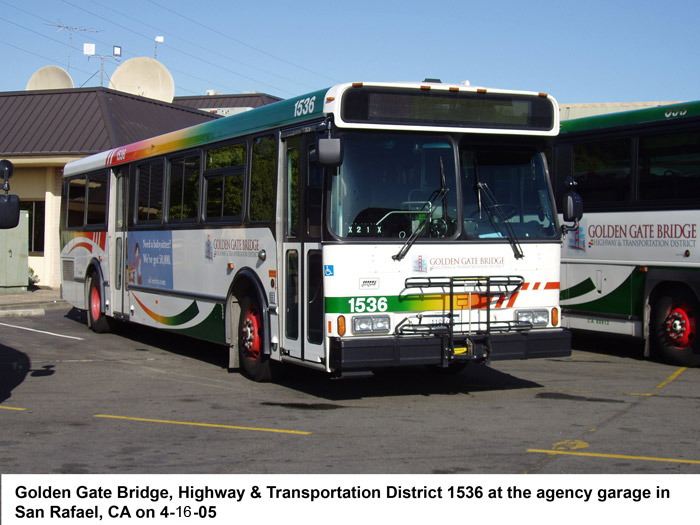
The next stop was at the San Rafael garage of Marin AirPorter, which provides charter and airport connection service. This company operates 20 highway buses, including six Prevost (four 40-foot and two 45-foot) and 14 MCI’s (one 102-C3, nine 102-D3's, one 102-DL3 and three 102-EL3's).
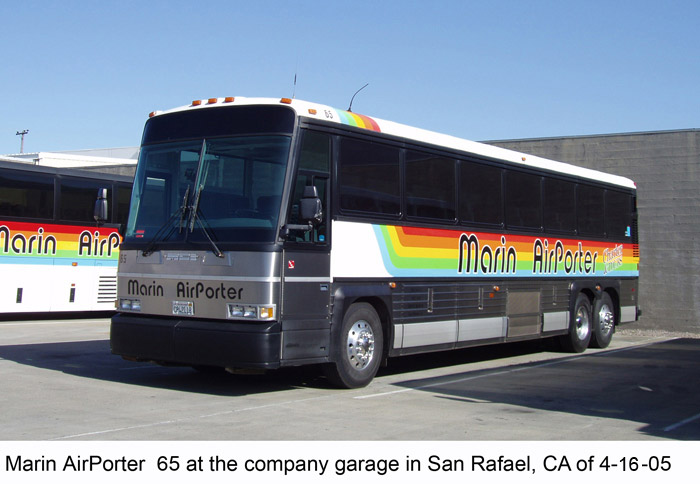
The next stop was at the Sonoma County Transit garage. This operator, which connects the various small cities and towns in the county, came about with the advent of the Transportation Development Act funding in the 1980's. It operates a fleet of 43 buses from its garage in southern Santa Rosa. Included are three Neoplan AN-440A’s, 34 Orions (31 high floor V’s and three low floor VI’s)–all 40-footers–and six ElDorado-National Easy Rider II’s.
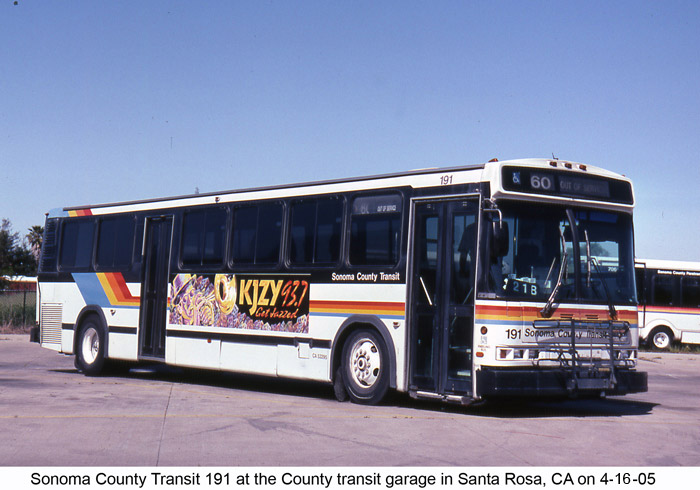
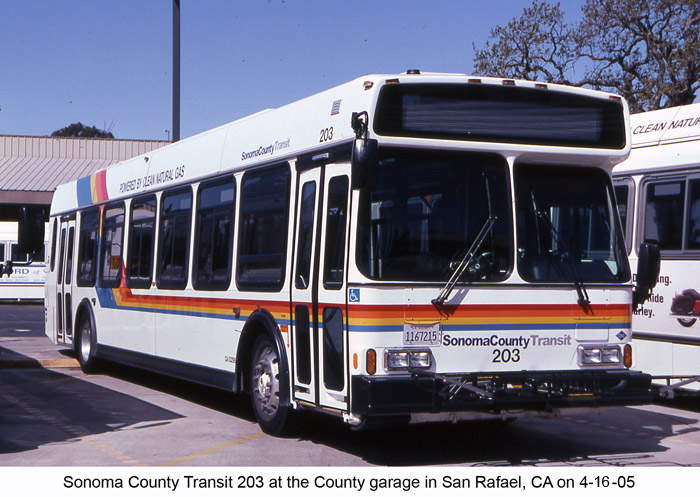
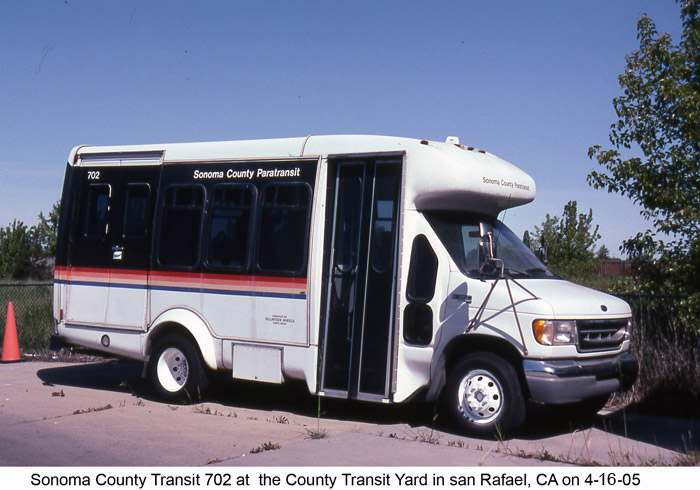
The stop for lunch was at the Santa Rosa Transit Center and the adjacent downtown mall. The transit center is served by Golden Gate Transit, Sonoma County Transit and the local Santa Rosa Citybus. Citybus has a fleet of 24 transit buses, including 13 40-foot low-floor New Flyers, eight Gilligs (two Phantom 35-footes, and five 40-foot and one 29-foot low floors), one ElDorado-Freightliner and two Thomas's.
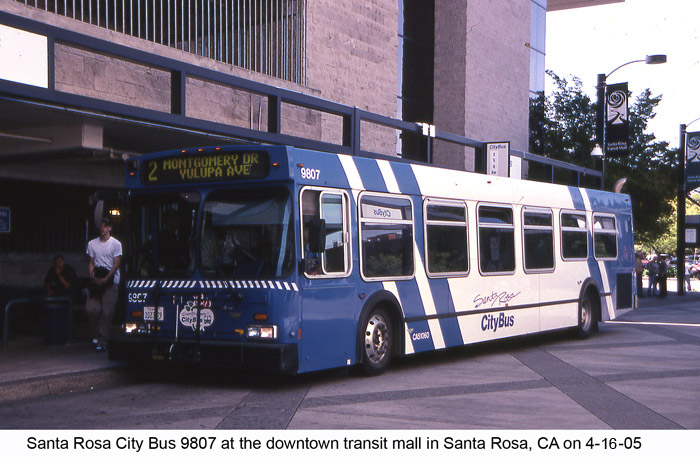
After lunch, the group traveled through the beautiful Napa Valley en route to the next stop in the City of Napa and the garage of Napa Transit. The city operates a fleet of 26 buses of which 11 are 35 foot GM and TMC RTS’s, six are 35 foot Gillig Phantoms, four are 40 foot New Flyer low floors, three are (American Classic Trolley–?) trolley replicas and two are ex-Omnitrans 40 foot GM RTS’s.
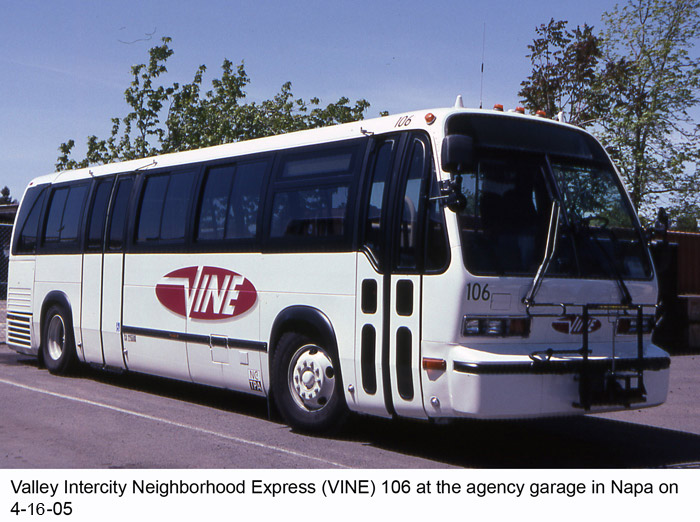
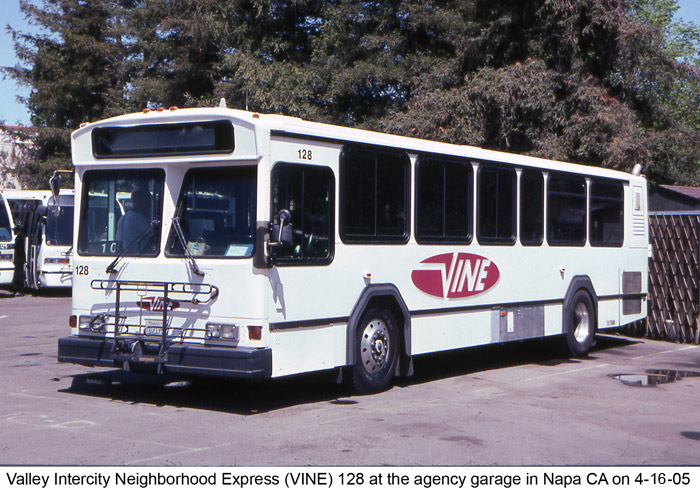
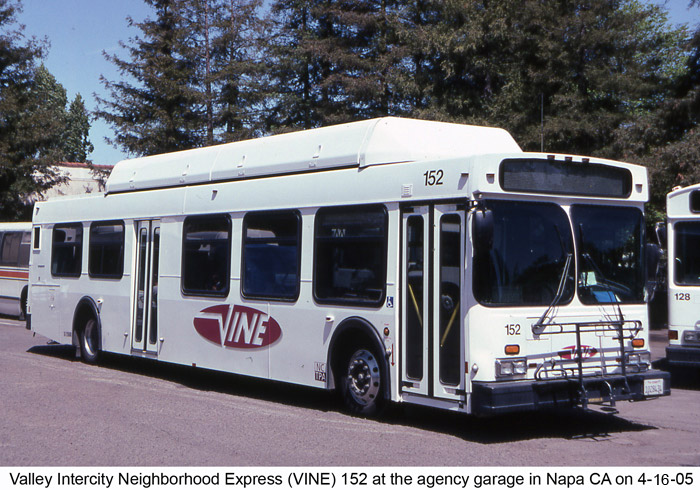
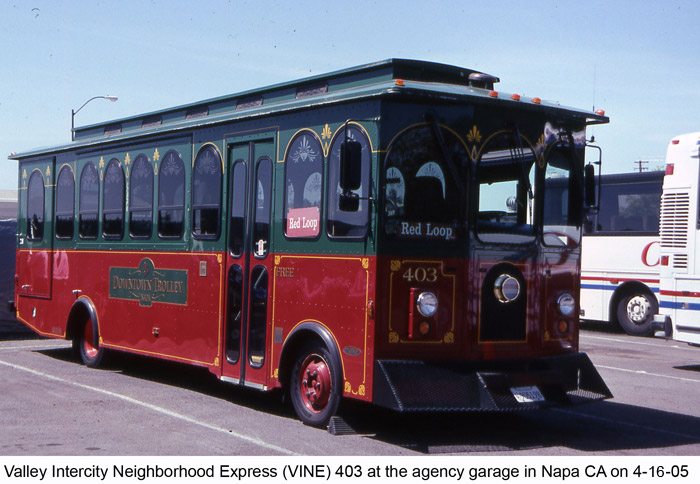
The next stop was at the Solano Mall in the City of Fairfield, where the Fairfield-Suisin Transit System (FTS) has a transfer point and curbside transit center. Fairfield is the home base of MV Transportation Co., a major contract operator, whose contracts include Fairfield. FTS operates a fleet of 46 buses, nine MCI highway buses for commute service and 37 Gillig Phantoms, of which 19 are 30-feet, 15 are 35-feet and 3 are 40-feet'.
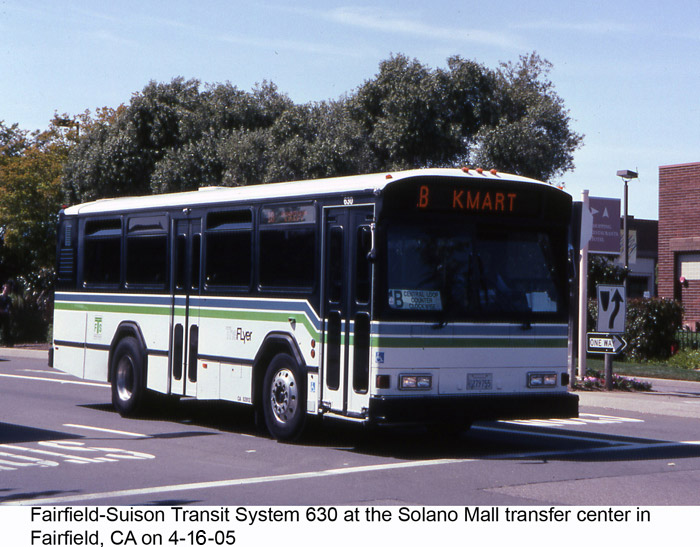
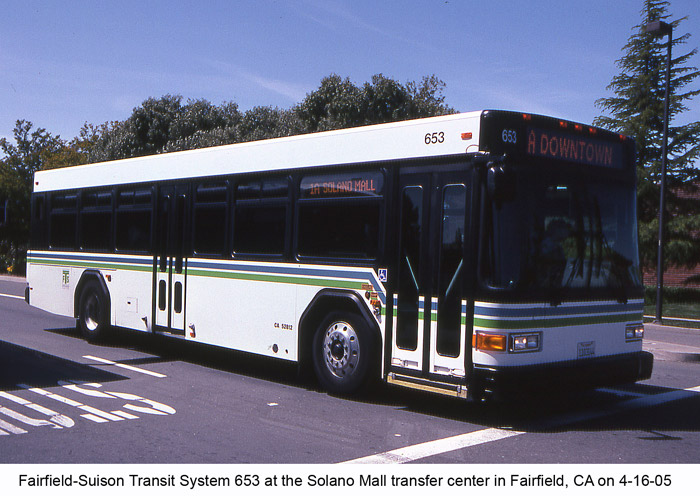
The group then headed south on Interstate 80 to the City of Vallejo, and old town located on the north shore of the Canquinez Strait that was a major ferry terminal for traffic from the Sacramento Valley that was headed for San Francisco. Nearby Mare Island was a major shipyard during WW II. Vallejo has had transit service since before the war; its present incarnation is known as Vallejo Transit; the former small city operation has recently expanded into the regional commute field to both Sacramento and San Francisco. The current fleet consists of 65 buses, of which 27 are 40-foot transit buses (19 Gillig Phantoms and 8 Orion V’s) and 38 over the road coaches, 3 TMC 102-A3's and 32 MCI D-4500's). The Vallejo stop concluded the tour of the North Bay operators.
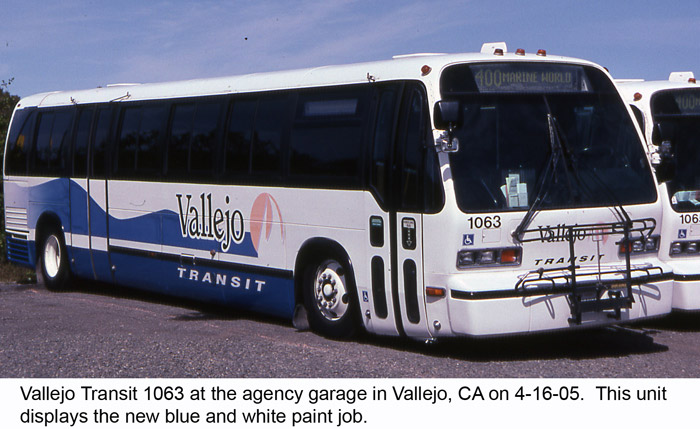
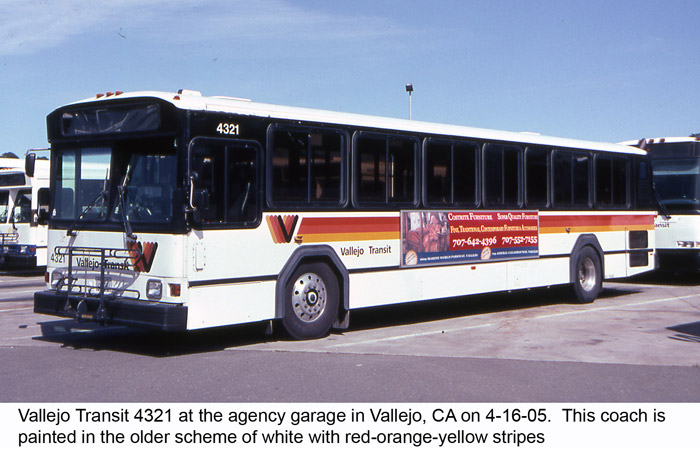
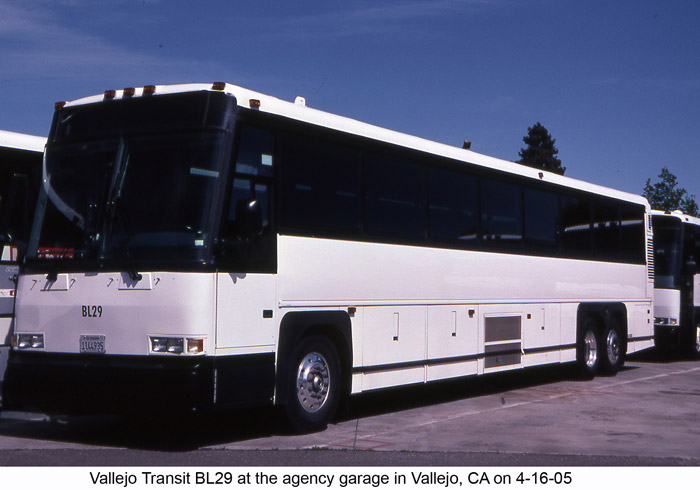
The tour buses then headed south on I-80 for The City, but on the way, a final stop was made in the Contra Costa County city of Pinole at the garage of Western Contra Costa County Transit Authority (WestCat) for which there was not time on Friday. WestCat operates a fleet of 51 vehicles: 13 ADA/Dial-A-Ride vans (3 Dodge Wide-Ones and 10 Ford cutaways) and 38 transit buses (3 Thomas, and 33 Gilligs–31 Phantoms [10 40-foot and 13 35-foot] and 2 35-foot Low Floors). The garage tour buses arrived at the Holiday Inn slightly before 6:00 PM, as scheduled.
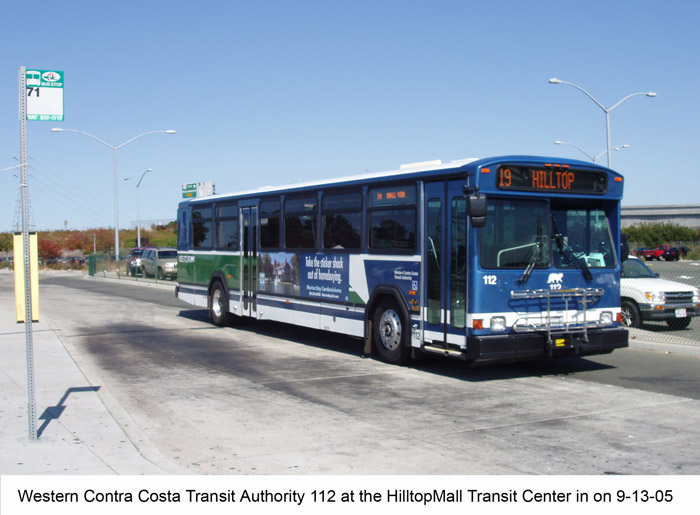
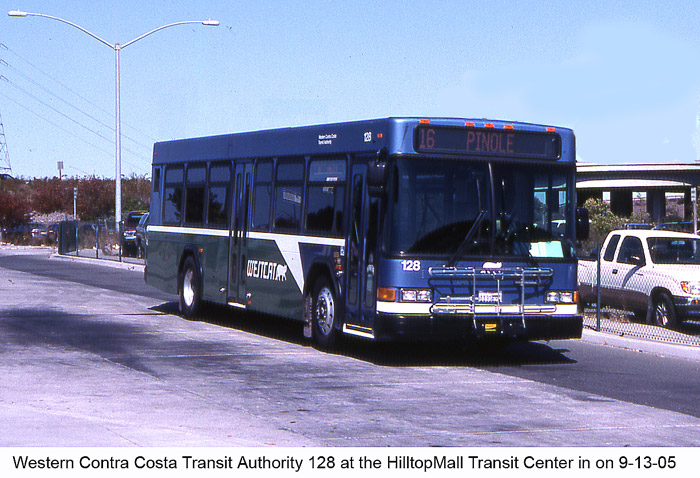
Saturday Night
Membership Meeting:
A very active flea market commenced at 7:00 PM, followed by the Spring
2005 membership meeting at 8:00, which was chaired by Executive Vice President,
Eli Bail. A planned industry
speaker became ill on Friday, and was unable to appear.
Secretary Gerald Squier then presented the results of the 2006-2010
Convention Location Survey. The top
ten locations are: Northeast Quadrant: Columbus-Dayton, OH, Southwest
Ontario Loop, Eastern Virginia Loop, East-Central Pennsylvania Loop and
South-Central Quebec Loop; Remainder of North America: Denver, CO, North
Carolina Loop, Vancouver-Victoria, BC, Miami-Fort Lauderdale, FL and Kansas
City, MO. Northeast sector dates
will be in the fall adjacent to the Columbus Day holiday, and the remainder of
North America will be in the spring–the last weekend in April.
The dates and locations for the 2006-2010 period will be:
Year Spring
Convention
Fall Convention
2006
April 29-30 Miami-Fort
Lauderdale
October 7-8 South-Central
Quebec
2007
April 28-29 North
Carolina Loop
October 6-7 Columbus-Dayton,
OH
2008
April 26-27 Denver,
CO
October 11-12
Southwest Ontario Loop
2009
April 25-26 Kansas
City, MO
October 10-11 Eastern Virginia Loop
2010
April 24-25 Vancouver-Victoria,
BC
October 9-10 East-Central
Pennsylvania Loop
Only
the 2006 and 2007 dates are final at this time.
Future dates will be confirmed on a two-year advance notification cycle
that will be published in MCA and on the Society’s website.
Eli Bail then provided an update of the status of the reorganization of
the Society, which has now been reincorporated in New Jersey as the Motor Bus
Society II. A further and full
report will be presented at the Fall 2005 meeting in Philadelphia.
The meeting was concluded after a great slide presentation of transit in
the SF Bay Area through the years by MBS member and San Francisco resident Harry
Peat with a very knowledgeable commentary by Ron Medaglia.
Sunday Garage Tour: The Sunday tour was dedicated to the lat of the three geographic areas--the West Bay or San Francisco Peninsula and the Counties of San Francisco, San Mateo and Santa Clara, with a major transit operator in each. The City and County of San Francisco has North America’s most diverse transit system: the San Francisco Municipal Railway, known locally as Muni, and operates four modes of transit–two rail (cable car and light rail) and two bus (trolley and diesel). The Sunday tour concentrated on the latter two. About 350-400 trolley coaches (274 ETI-Skodas - 241 40-foot and 33 60-foot artix, and 60 New Flyer 60-foot artic, plus the remainder of 343 Flyer E10240's) and 500-550 diesels (including 332 Neoplans [124 60-foot artic and 208 40-footers, including 2 CNG test buses], 130 New Flyer [106 40-foot and 24 60-foot artic], what is left of 45 Orion I 30-footers and 45 NABI 40-footers. All of these are high-floor models. Also on the property for testing are two Orion VI low floor hybrid buses. The trolley coach system is operated from two garages, Presidio and Potreto; diesels are operated from three garages, Kirkland, Woods and Flynn. The first stop of the day was at the Potrero Division, where virtually all types of TC’s were seen. The second stop was at the nearby Woods Division (named for a former General Manager John Woods), where most types of bus fleet were seen. This stop was followed by an unscheduled stop at the Muni Marin facility, which houses a number or antique and out-of-service buses, including a White 784 and a Twin Coach 44-D.
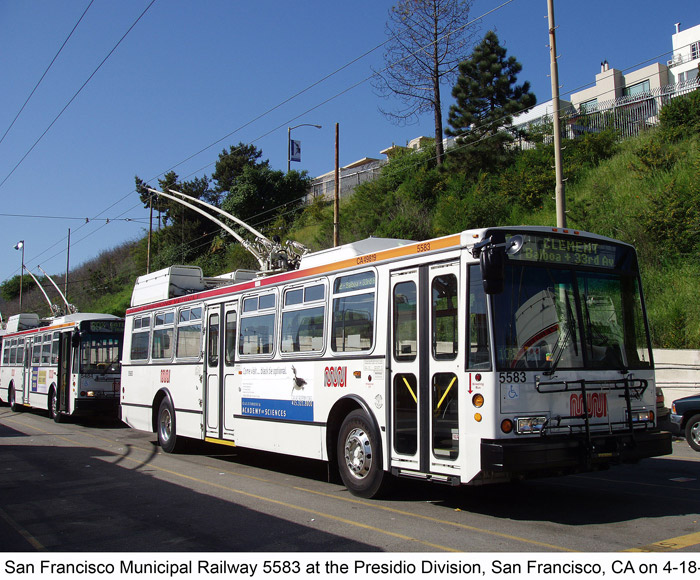
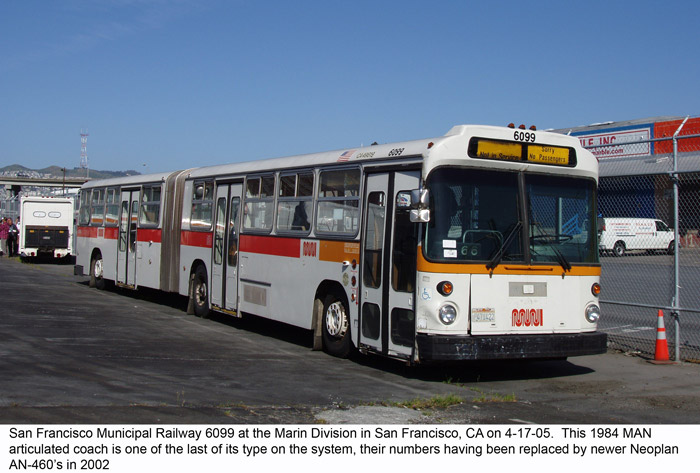
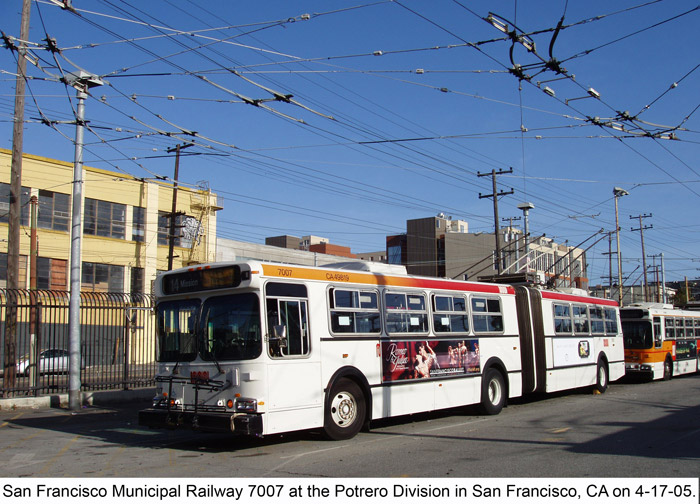
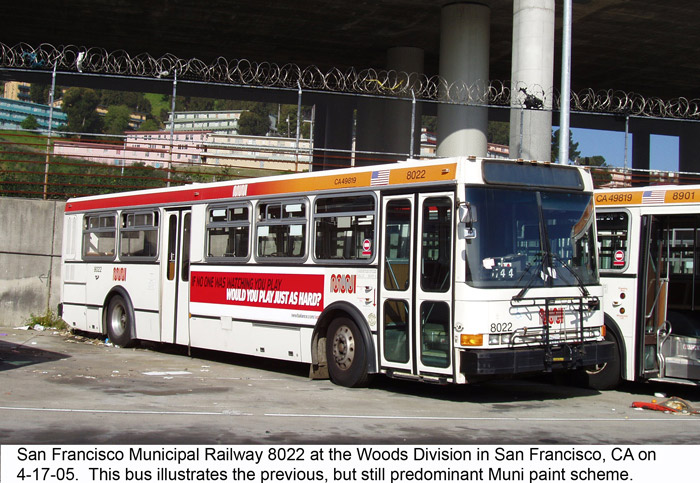
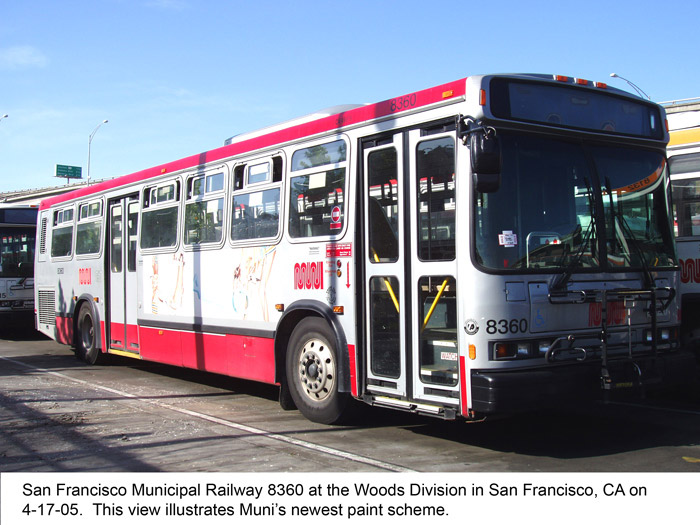
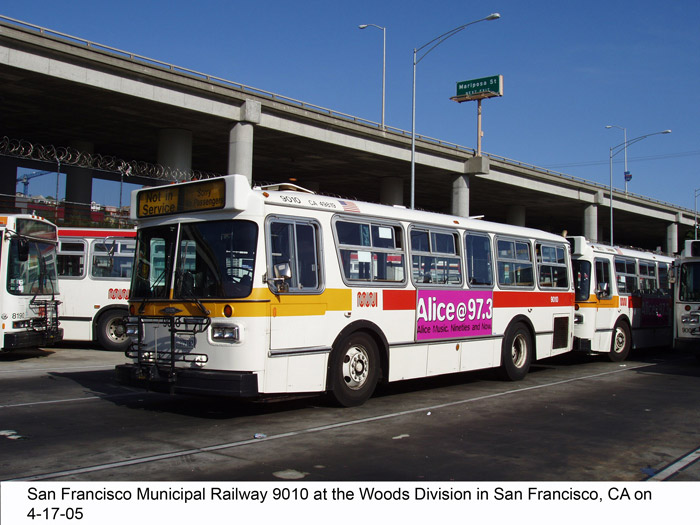
The next stop was at the Coach USA San Francisco garage. The CUSA SF garages serves the former SF Gray Line and Franciscan operations. Nearly 100 buses are housed at this facility including Neoplan AN116, VanHool T-800-35 -40 and -45, Setra HDH-215, and MCI 102-C3, and 102-DL3 model parlor coaches, plus leased 40-foot Golden Gate Transit RTS-II’s, Leyland double deck, Classic Cable Car, and assorted vans and cutaways.
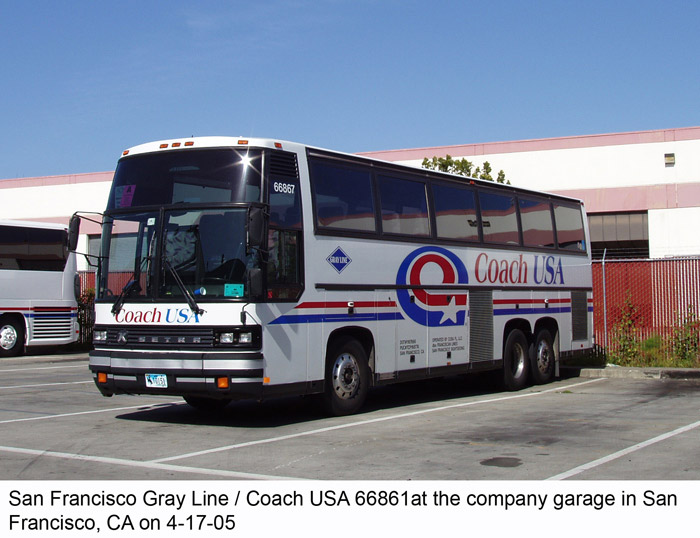
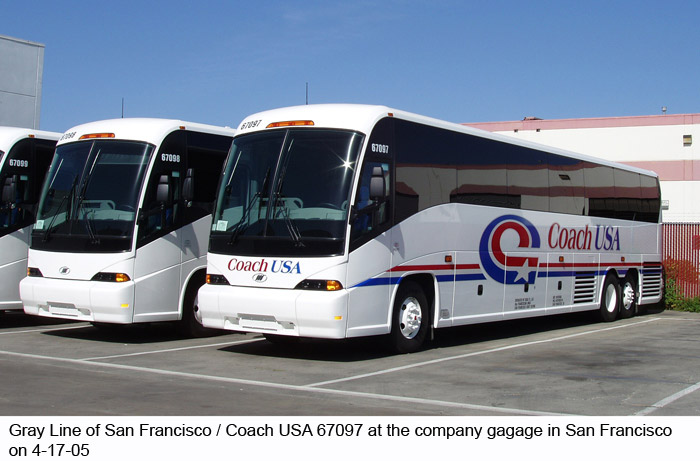
Moving out of San Francisco, the next stop was at the South San Francisco division of the San Mateo County Transit District (SamTrans). SamTrans was created in the mid-1970's from the former Greyhound Peninsula commuter and suburban operation plus a number of small private companies and recently established city-run systems. It now operates 454 buses out of two garages, one in San Carlos and the other in South City (SSF). Included in the fleet of 454 buses are 55 NABI 60-foot artic, five Flxible 40-foot Metros and 394 Gillig Phantoms of which 330 are 40-footers and 64 are 35-footers.
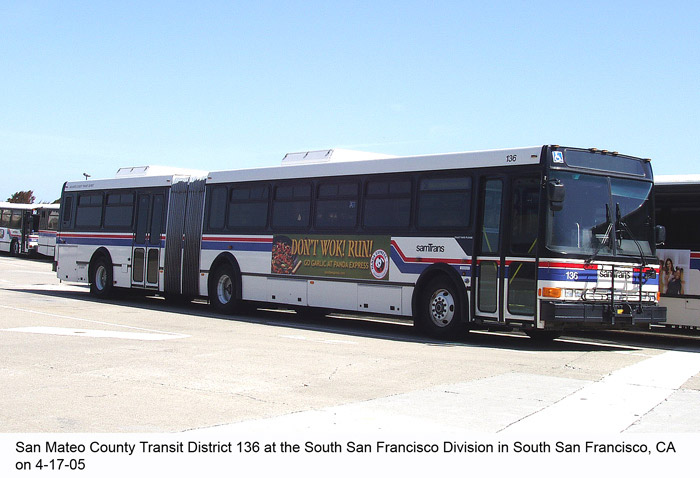
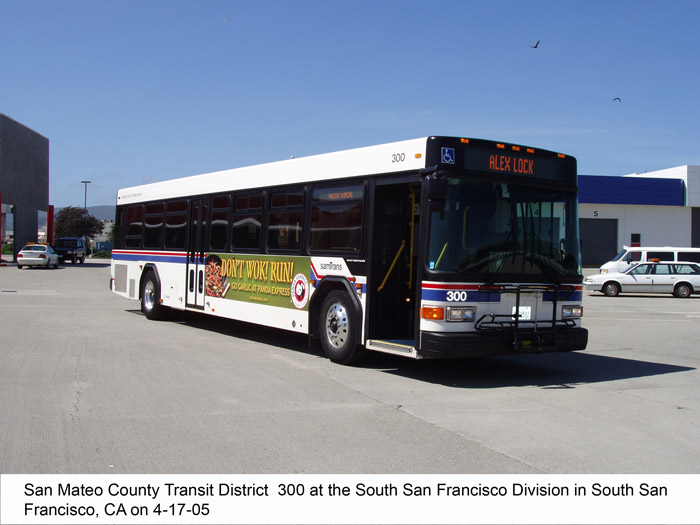
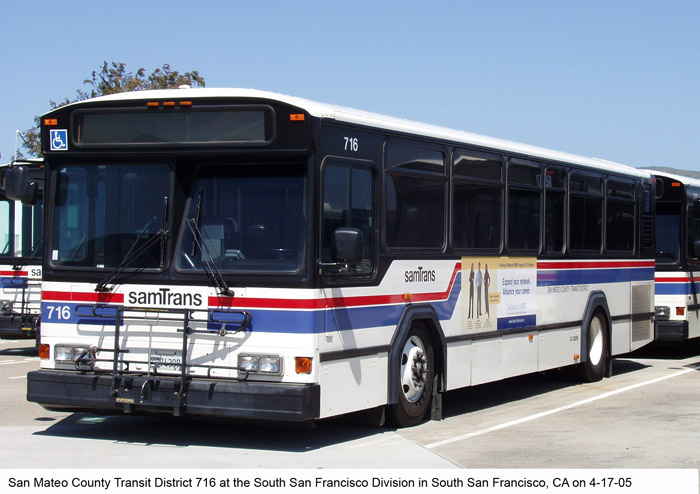
The next stop was at the nearby yard of SFO Shuttle Bus Co., which provides shuttle service between the airport terminals and nearby parking lots. This operator uses 27 buses--12 Orion I 35-footers and 15 New Flyer low floor 40-footers.
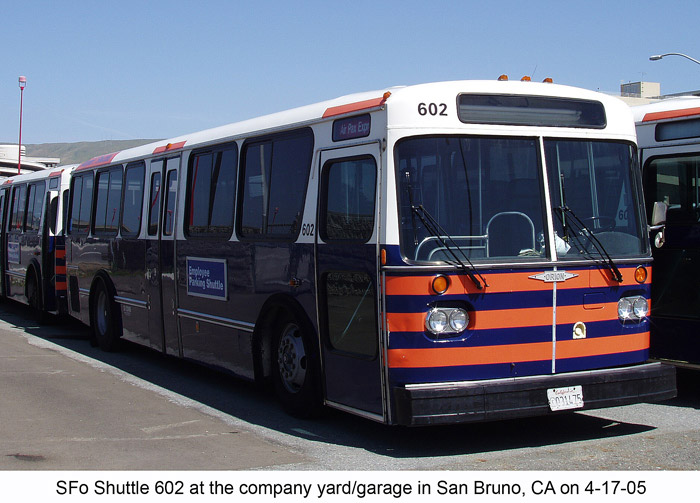
After lunch at the Hillsdale Mall in San Mateo, the tour proceeded to San Jose to look at the operations of the Santa Clara Valley Transportation Authority (VTA). Like SamTrans, VTA got started in the mid-1970's by taking over the commuter and suburban operation of Greyhound. It also acquired San Jose City Lines, Peerless Stages (suburban) and Peninsula Transit Lines in Palo Alto, as well as a couple of recently established small city-owned systems. Originally called the Santa Clara County Transit District (and later SCC Transit Agency), VTA expanded to cover most of the SC Valley portion of the County, including a light rail line that has expanded three times since its inceptions about 20 years ago. VTA operates 473 buses--292 Gilligs (197 low floor [174 40foot and 23 35-foot] and 145 40-foot Phantoms), 40 New Flyer 60-foot artic and 111 Flxible 40-foot Metros. VTA operates from three garages: North Division (Mountain View), Cerone (North San Jose) and Chaboya in central San Jose. The tour stopped at the San Jose Amtrak/Caltrain Station to view VTA bus operations there. Afterwards, the group continued to VTA’s North San Jose facility, where one of the Gillig low floor fuel cell buses was shown.
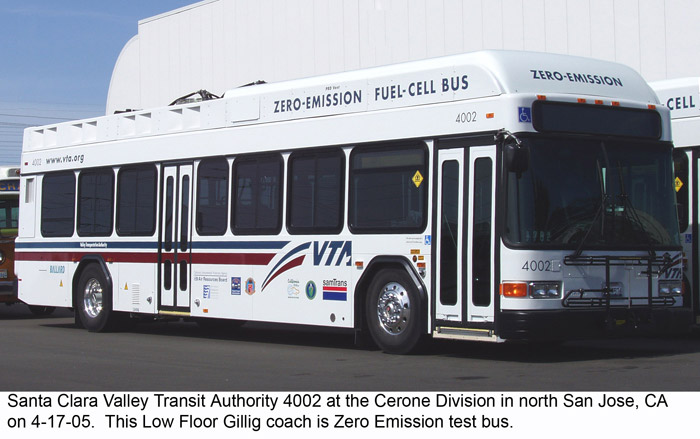
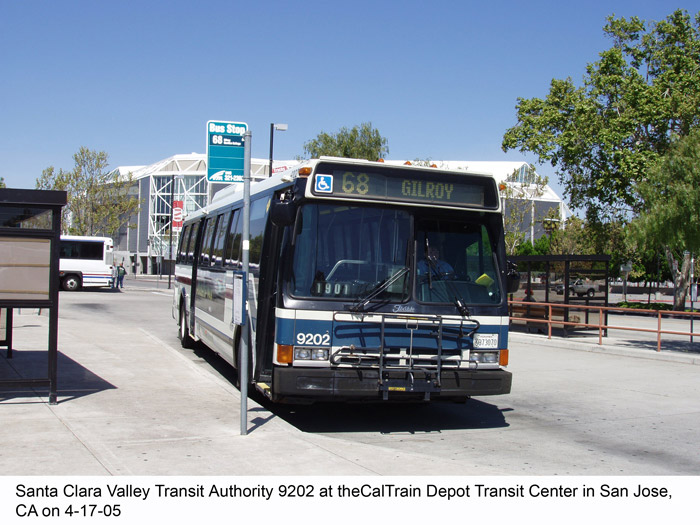
The
final stop of the day was at the Fremont facility of the Pacific Bus Museum,
where a portion of their collection was on display.
Convention participants inspected the buses and many made purchases at
the Museum’s gift shop. For more information on the PBM, visit their website, www.pacificbusmuseum.org.
The tour buses then returned to The City, arriving at the hotel at nearly
7:00 PM, an hour later than planned.
Monday Rail Facilities Tour: To respond to member interest, in past conventions, it has been the policy to include urban rail yards and shops in the itinerary along with bus facilities. But in the case of the SF Bay Area, there were so many bus operators to see (and four were actually missed for one reason or another) that there wasn’t rime for any rail facility stops. Inasmuch as we are the Motor Bus Society, and because some members aren’t interested in rail operations, it was decided to devote the originally scheduled three days to buses, and add a fourth day to visit rail facilities, and this was done on Monday. There were 35 attendees on board the single tour bus for this day. The morning was spent in The City visiting three of Muni’s rail facilities and the other trolley coach garage. The first stop was at the Presidio Trolley Coach Division. This location includes the former Geary Carhouse, the first Muni facility, which until recent years also housed administrative functions. Of primary interest at this location is the collection of preserved TC’s that are stored in one of the Geary Carhouse bays. Included are a pre-war St. Louis Car Co. (# 506), a former Seattle pre-war Twin Coach (restored as Market St. Ry. # 50), and two Marmon-Herringtons, one a Muni TC-48 (# 776) and a former Dayton unit (#559). After the historic buses were viewed, the group proceeded to the lower level Presidio TC yard for photos.
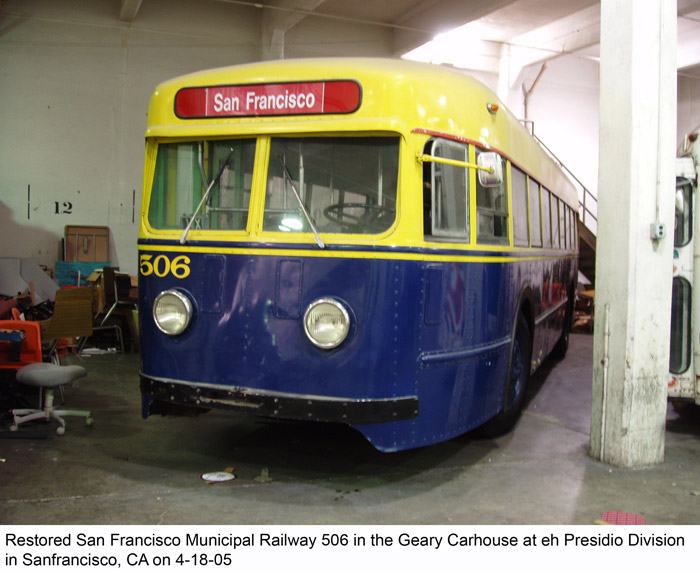
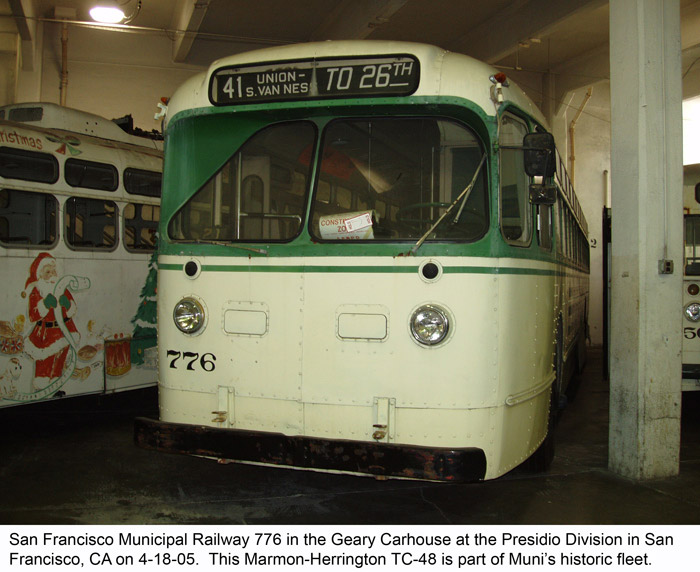
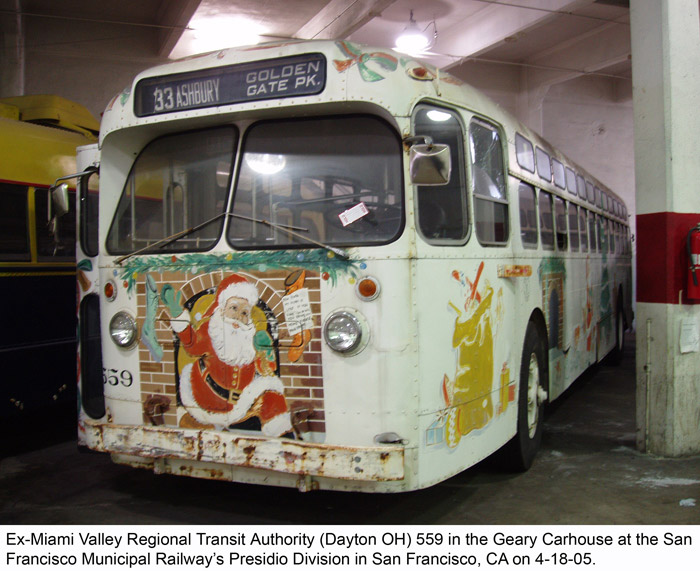
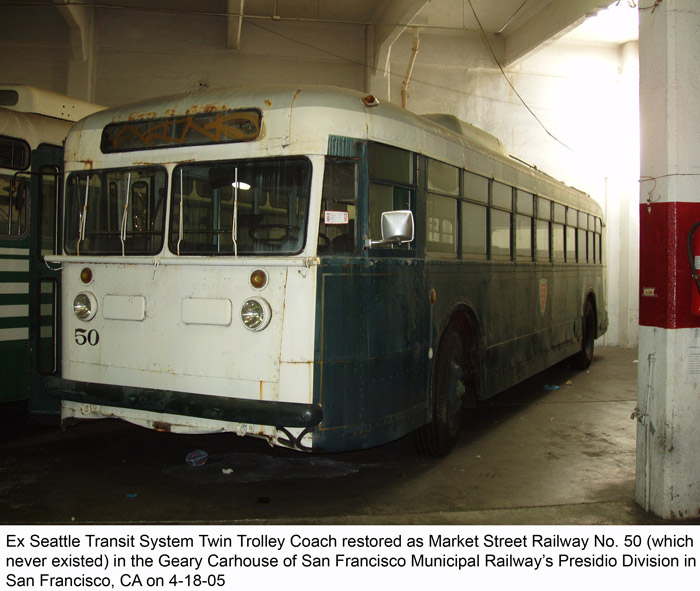
The next stop was at the Cable Car barn and museum (the Washington-Mason Division). On the upper level of the cable winding building is a gift shop and displays of various cable car parts (car trucks, grips, etc.) and a view of the cable winding machinery on the lower level. A Muni representative gave a talk of the history of cable car operations.
The next stop was at the “Mint” Division (so-called because it is at Market & Duboce, just south of the San Francisco Mint. At this location, the non-profit Market Street Railway group (not to be confused with the actual transit company that Muni acquired in 1944) through its member volunteers rebuilds and restores antique cars for Muni’s historic streetcar operation. The group is currently restoring Market Street Railway car # 798 (the only known MSRy carbody in existence). For more information on the non-profit MSRy group, their restoration activities and the Muni historic car fleet, go to the MSRy website, www.streetcar.org. The last of the Muni stops was at the surface rail complex at Geneva & San Jose, adjacent to the BART Balboa Park Station. The complex includes the former Geneva Carhouse, used by the historic fleet, and the Green Division (named for former General Manager Curtis Green), which houses the subway-surface light rail fleet. At the Geneva Division, which was originally a Market St. Ry. facility, the old car storage barn has been raised, and a new two track repair shop was constructed at the east end of the property. The office building portion has been designated as an historic monument and is awaiting restoration. The Green Division is located diagonally across San Jose Ave. the site of the former Ocean Division bus garage, and includes the system’s rail repair facility and rail operating facility.
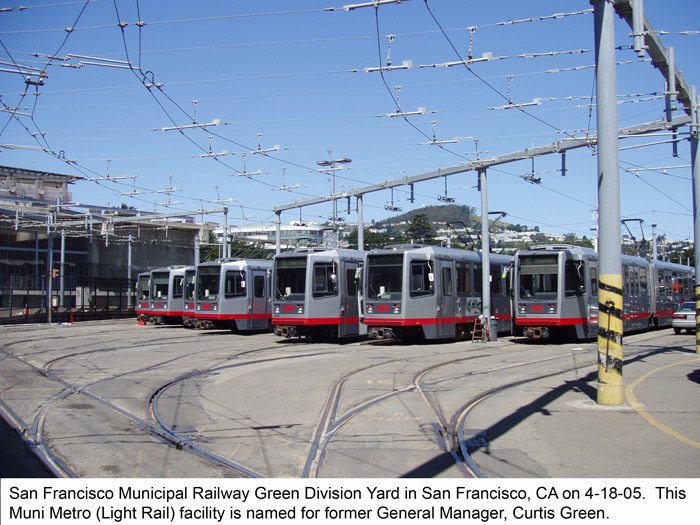
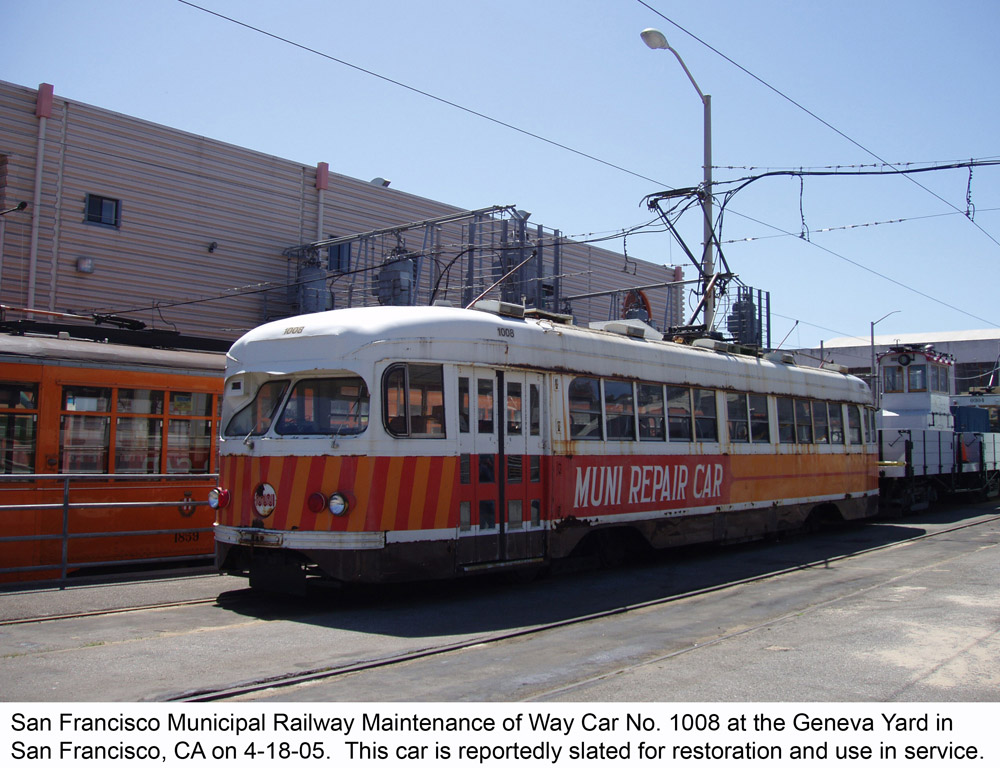
Leaving The City around 1:00 PM, the group headed south to San Jose, with a stop at the Hillsdale Mall once again for lunch. Arriving in San Jose, the tour proceeded to VTA’s light rail facility located off of North First St. The facility houses VTA’s fleet of low floor LRV’s. VTA’s original fleet of high floor cars is now out-of-service and pending sale to Salt Lake City and Sacramento. Also located on the site is the light rail repair shop and two restored historic streetcars which had been used for a downtown shuttle. The final stop was at the History Park in Kelly Park, located south of downtown San Jose. The History Park includes restored antique and historic buildings and an operating streetcar line, which featured a Birney Safety car on this day. To support the streetcar line, there is a streetcar repair shop, which actually restored the half-dozen or so cars in the fleet. The lone tour bus then returned to the Holiday Inn around 6:00 PM for the official end of convention activities.
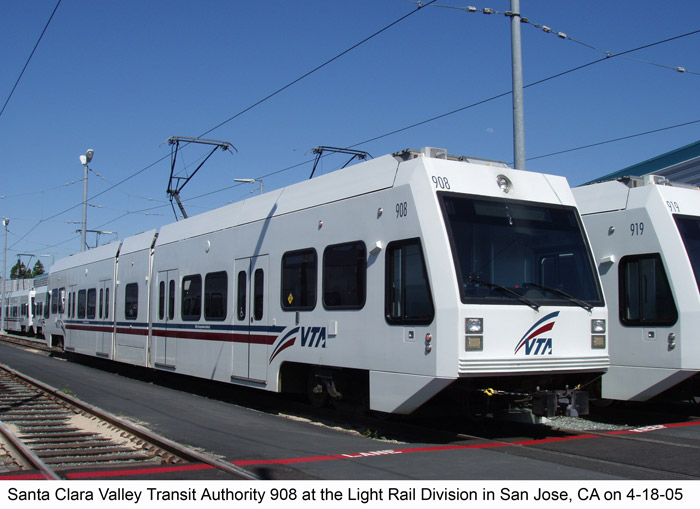
Acknowledgments:
The Conventions Staff wishes to thank the following people for their assistance
in making the San Francisco meeting such a great success:
Friday
Gillig Corporation:
Brian Macleod - Senior Vice President
Joseph
Policarpio - Director of National Sales
Central Costa County Transit Authority:
Celinda Dahlgren - Director of Administration
Mary
Burdick - Manager of
Marketing and Public Relations
Eastern Contra Costa County Transit Authority:
Alan Hutcheson - Director of Administration
Bill
Luckhurst - Director of
Livermore-Amador Valley Transit Authority:
Barbara Duffy - General Manager
David Massa - Maintenance Manager
Cory LaVigne - Manager of Planning, Operations
Alameda-Contra Costa Transit District:
Jim Gleich - Deputy General Manager
Joe
DeProspero - Chief Maintenance Officer
Doug Byrne - Division 6
John
Reminsey
Union City Transit:
Wilson Lee - Transit Manager
David
Brophy - Division Manager
Saturday
Golden Gate Bridge, Highway & Transportation District:
Susan Chiaroni - General Manager,
Bus Division, Morina Ramos - Deputy General Manager, Bus Division
Gene
Walker -
Maintenance Manager
Marin Airporter:
Randy Kokke - Vice President
Sonama County Transit:
Brian Albbe - Transit System Manager
James
Ryan - Project Manager, Budgets and Grants
Santa Rosa City Bus:
Mona
Babauta - Deputy Director, Transit
Napa Transit/Napa County Transportation Planning Agency:
Mike Zoon - Executive Director
Vern
Willard - Transit Supervisor, ATC/Vancom
Fairfield-Suisin Transit System/Solano Transportation Authority:
Dan
Christians - Assistant Executive Director/Director of
Nigel Browne - Transportation Planner
Vallejo Transit:
Guia
Del Rosario - Transit Manager
Western Contra Costa County Transit Authority:
Electra Jeter - General Manager
James
Grimes - Maintenance Manager
Sunday
San Francisco Municipal Railway:
Mike Burns - General Manager
Virgil Dennis - Senior Controller, Information Support
Harry
Jensen - Electrical Trolley Superintendent,
Potrero Division.
Coach USA-San Francisco:
Michael
Walters - Vice
President and General Manager
San Mateo County Transit District:
Mike Scanlon - General Manager
Micque Redding - Supervisor, Bus Transportation
Elizabeth Waters - Assistant Superintendent
SFO Shuttle:
Bon
Rooper t - Manager, Bus
Transportation
Santa Clara Valley Transportation Authority:
Peter Cipolla - General Manager
Gail Collins
Jeffery Oxsam
Pacific Bus Museum:
Ron
Medaglia - President
Monday
San Francisco Municipal Railway:
Woon Wong - Maintenance Superintendent, Presidio Division
Karl Johnson - Electric Transit - Mechancial Assistant Supervisor
Michael Ellis
-
Superintendent,
LRV Fleet
Maintenance, Generva Division.
Santa Clara Valley Transportation Authority:
Shawndra Wendles - Customer Service
Arthur
Douwes - Senior Mechanical Engineer
Kelly Park Historical Park:
Bob
Schneider - Volunteer, History of San Jose